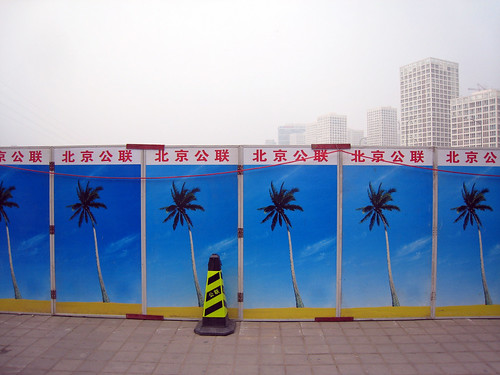
Today while rummaging in the library I came across a very interesting book on skyscrapers called The Skyward Trend of Thought: The Metaphysics of the American Skyscraper, by Thomas AP van Leeuwen. In the book I found these amazing quotes about tall buildings from practitioners, theorists, and critics written towards the beginning of the skyscraper phenomenon (one even written before skyscrapers were really a possibility). I find them considerably poignant and relevant still today considering the continued exaltation of the skyscraper by architects and their patrons and the unquestioned building type of choice for the building boom in the Middle and Far Easts. While I am not a detractor of the skyscraper, these quotes do give us something to reflect upon. Here is a small sampling of the quotes I found:
On Philosophy
Psyche and the Pskyscraper.
If you are a philosopher you can do this thing: you can go to the top of a high building, look down upon your fellow men 300 feet below, and despise them as insects…The philosopher gazes into the infinite heavens above him, and allows his sold to expand in the influence of his new view. He feels that he is the heir to Eternity and the child of Time…And when the philosopher takes the elevator down, his mind is broader, his heart is at peace, and his conception of the cosmogony of creation is as wide as the buckle of Orion’s summer belt.
-John O’Henry, The Complete Works of O’Henry (1953)
‘Go to now. Let us build a tower whose top may reach unto heaven.’ From that day to this, whenever men have become skillful architects at all, there has been a tendency in them to build high; not in any religious feeling, but in mere exuberance of spirit and power – as they dance or sing – with a certain mingling of vanity – like a child builds tower of cards.
-John Ruskin, from a lecture in 1853
On Construction
Building skyscrapers is the nearest peace-time equivalent of war. In fact, the analogy is startling, even to the occasional grim reality of a building accident where maimed bodies, and even death, remind us that we are fighting a war of construction against the forces of nature.
-Col. William A. Starrett, Skyscrapers and the Men Who Build Them (1928)
The
-Theodore James Jr., The
Partly as a realistic analogy to the destruction of the
- Eugene Clute ‘Dr. John Wesley Kelchner’s Restoration of King Solomon’s Temple and Citadel; Helmle and Corbett Architects’ published in Pencil Points (1925). A description of Corbett and Helmle’s proposal to reproduce Solomon’s
On Preservation
The tearing down and building that is forever going on here, at the heart of things, give evidence of vigor and vitality that will continue to demolish and create.
Schultz and Simmons, Offices in the Sky (1959)












